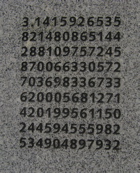I wasn’t planning on posting anything for the Carl Sagan blog-a-thon marking the 10th anniversary of his death, but as it happens I recently discovered something I’d always remembered from Sagan’s 1978-79 TV show Cosmos was probably wrong.

I still have a mental image of Sagan sitting in a boat talking about how for millennia Japanese fishermen would throw back crabs that resembled a human face, thinking it might be the spirit of an ancient samurai. Over the years, he explained, these returned crabs bred to look even more like human faces, and the result of this unintentional artificial selection is the so-called samurai crabs, which bear a striking resemblance to the face of a samurai.
It’s a great story which has been around at least since a 1952 Life Magazine article by evolutionary biologist Julian Huxley. But according to a 1993 article by crustacean evolutionary biologist Joel Martin it’s almost certainly false. He points out that, though the myth that the crabs in the Sea of Japan are the ghosts of defeated Heike samurai is fairly old, there are three reasons the face-like quality of the crabs can’t be due to selective fishing:
-
Many crabs look like human faces, whether or not they are from the Sea of Japan or in regularly fished waters. The grooves that make the outline of the face are caused by supportive ridges that serve as sites for muscle attachments.
-
Fossils of crabs closely related to the samurai crab also resemble human faces, even though they predate man’s appearance on earth.
-
Most damning of all, the fishermen who make their living from the Sea of Japan don’t eat any of the samurai crab regardless of what they look like: they don’t grow any bigger than 1.2 inches across the back, so fishermen always just throw them back (or rather, they never bother to retrieve them from their nets in the first place).
It’s a shame that the story of unintentional artificial selection isn’t true, because it really is a great teaching story about evolution. The fact that I still remembered it enough to go searching on Wikipedia for “samurai crab” 27 years after I saw the original program may be the best testament to Carl Sagan I can give.

